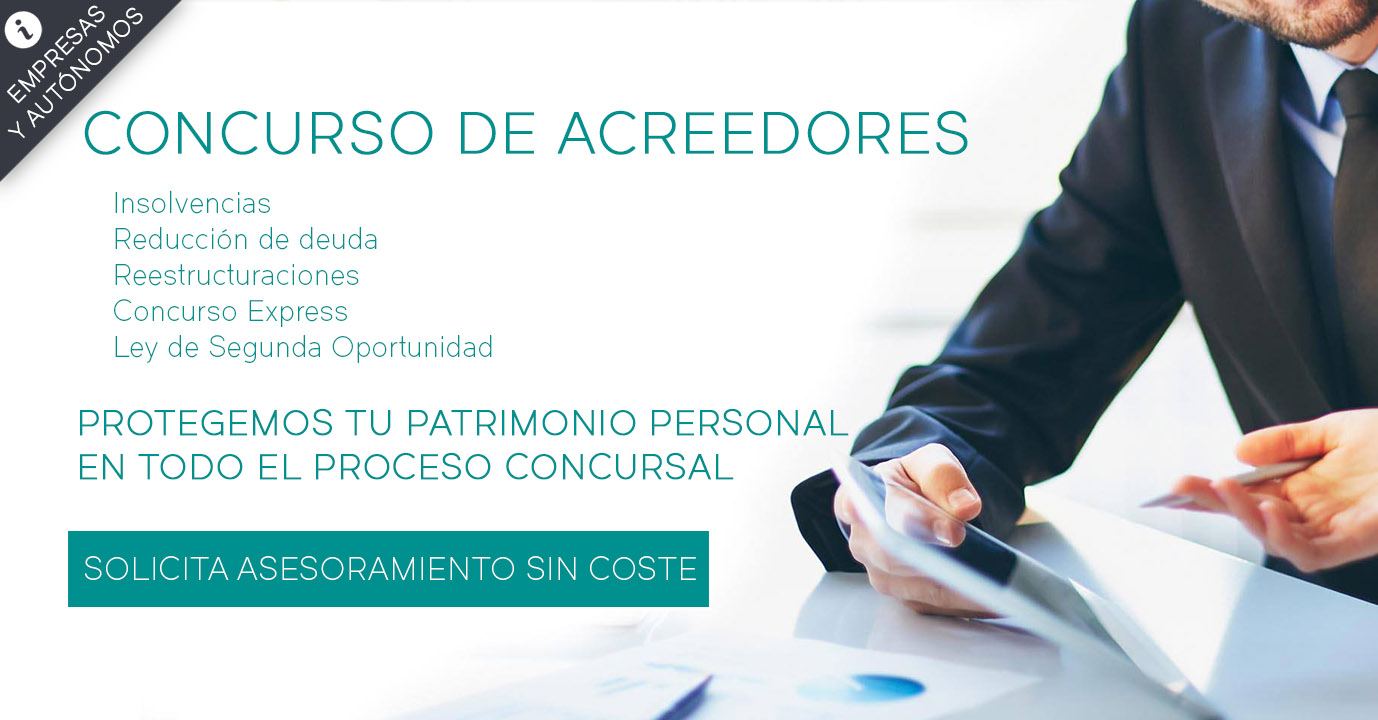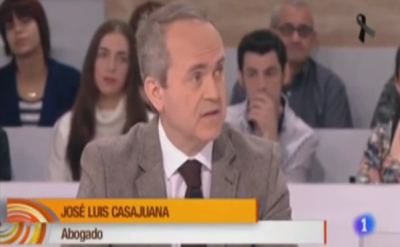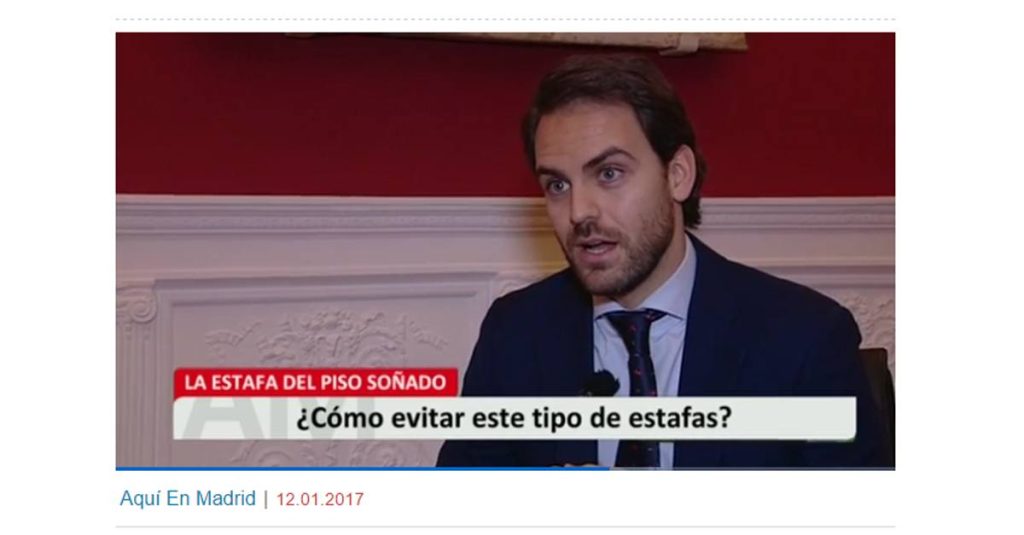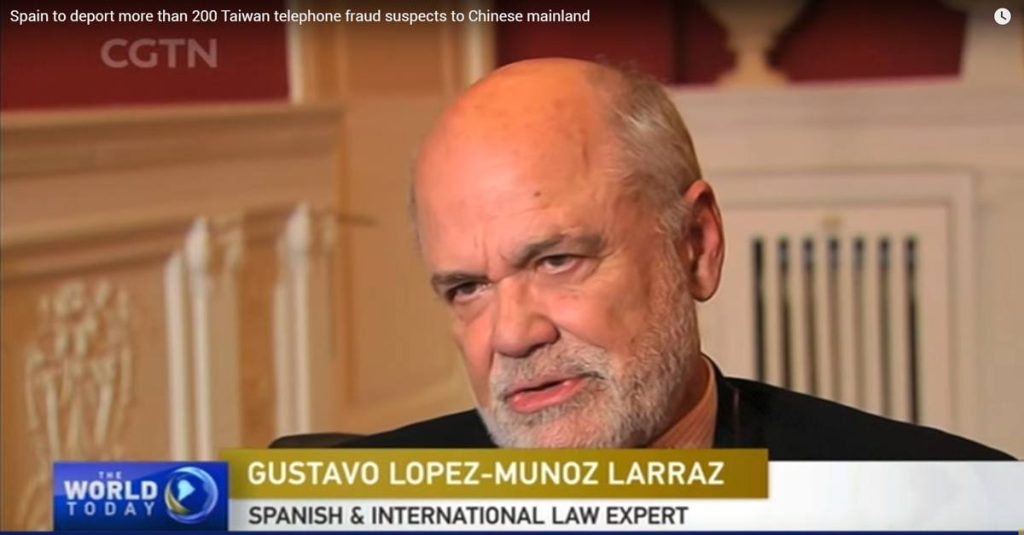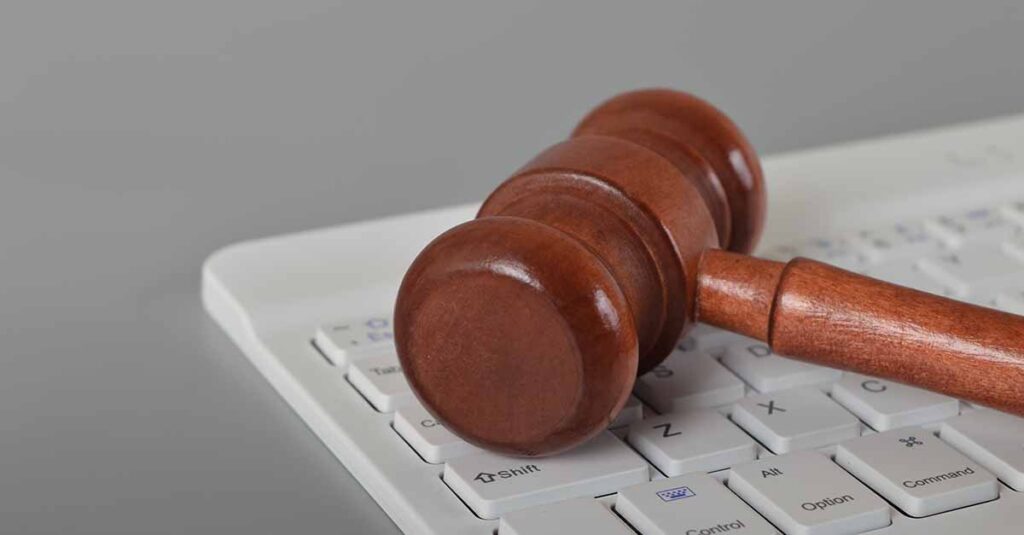Civil Liability in a traffic accident
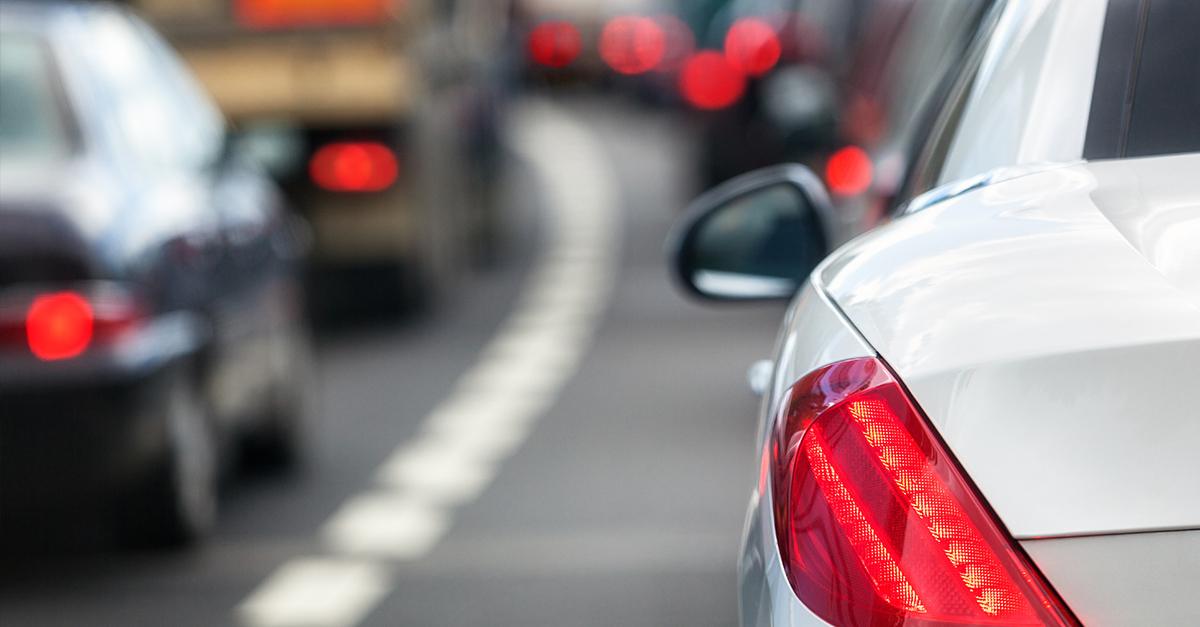
After the risk caused by driving motor vehicles, the driver is responsible for the damage caused to people or property on the occasion of circulation.
Art. 1.4º says:
</ em>
STS dated April 17, 2015:
“Even if there is fraud on the part of the insured, the insurer must indemnify the injured party who exercises direct action»
Causes for exemption from liability
- In case of damage to people: if it proves that the damage was due (art.1 L)
- Only to the conduct or negligence of the injured party, but if proven.
- Force majeure foreign to the driving or operation of the vehicle.
(These will not be cases of force majeure, vehicle defects, or the breakage or failure of any of its parts or mechanisms, eg wheel blowout)
Sole fault
Jurisprudential criteria of the due diligence canon:
- Principle of responsibility: Compliance with existing regulations.
- Principle of trust in the normality of traffic: everyone participating in traffic must expect others to behave appropriately, complying with traffic regulations.
- Principle of road safety or defense: You should not rely unlimitedly on the previous principle, but rather anticipate and avoid faulty behaviour.
- Principle of controlled driving: Every driver must take the necessary precautions according to the specific traffic circumstances to control the movements of the vehicle.
Regarding the victims it must be proven that they conclude three essential elements that must occur simultaneously to achieve the liberating effect :
- a personal and subjective conduct, action or omission.
- the action conduct must be guilty.
- It must also be unique or exclusive.
Notwithstanding the exclusive fault, when the victim contributes to the production of the damage, all compensation will be reduced, including those related to expenses in that the cases of death, sequelae, temporary injuries have been incurred, in response to concurrent fault up to a maximum of 75%.
Exception
Non-driver victims under 14 years of age or who suffer physical, intellectual, sensory and organic impairment that deprives them of civil liability capacity. In these cases, repetitive action against parents and guardians is excluded only in cases of temporary injuries and sequelae.
This will also apply in the event of a damage mitigation breach. This duty is breached if the victim stops carrying out a generally required conduct that, without entailing any risk to her health or physical integrity, would have prevented the aggravation of the damage produced, and especially if she abandons the healing process.</ P>
Reference to Compulsory Civil Liability Insurance derived from the Use and Circulation of the Automobile
Regarding damage to property (art. 1 L) the driver will respond to third parties when it is civilly responsible as established in art. 1902 CC, art. 109 et seq. CP and the provisions of this law.
Art. 1902 CC:
“Whoever by action or omission causes damage to another, intervening fault or negligence, is obliged to repair the damage caused”.
Regarding cases of liability of the non-driver owner, he must be liable for damages to people and property caused when he is linked to it by any of the relationships that regulate art. 1903 CC and art. 120.5 CP. The Liability will cease when the owner proves that he used all the diligence of a good family man to prevent the damage. </ P>
Art. 1L:
«The non-driving owner of a vehicle without compulsory subscription insurance will be civilly liable with the driver of the same, for damages to persons and property caused by this, unless it proves that the vehicle had been stolen. (This modification was introduced by Law 21/2007, of July 11).»
Damages and losses caused to people will be quantified according to the criteria and within the compensation limits established in Title IV of the Bill, and in any case will include comprehensive reparation for the damage and its backbone reparation, that is, attention will be paid to the personal, family, social and economic circumstances of the victim, including those that affect their loss of income and the loss or decrease of your ability to make a profit.
Tax treatment of compensation paid
The amounts paid will be considered compensation in the amount legally recognized for the purposes of art. 7 d) of the Personal Income Tax Law, which states:
“Exempt income: the following income will be exempt: …/… compensation as a consequence of RC for physical or mental damage to people, in the amount legally or judicially recognized ”.
Quantitative limits of compulsory insurance
The maximum amount of compulsory subscription insurance coverage will amount to the following amounts:
- Burial and funeral expenses in the event of death: according to the uses and customs of the place where the service is provided, in the amount that is justified. Expenditure without justification.
Expenses for medical, pharmaceutical, burial, etc., will be compatible with each other and with the other compensation provided.
Application of the amounts of compulsory insurance coverage
Art. 10, 2nd R (*). The expenses of medical, pharmaceutical, hospital assistance and burial and funeral expenses will be considered included within the amount of 70 M €/ claim. (*) Clarification introduced by RD 1507/2008, of September 12.
Concurrence of damages and causes
(Art. 19,1º R). If the same accident (covered by a single mandatory Civil Liability insurance) results in several victims of material or personal damage, and the sum of the compensation exceeds the mandatory limit, the Dº of each injured party against the insurer will be reduced proportionally to the damages suffered.
Application of the amounts of compulsory insurance coverage
(Art. 10,1º R (*)). When there is damage to persons and damage to property and the compensation for the latter exceeds €15 M/claim, the difference will be compensated from the remainder that could result in compensation for damage to persons up to 70 M €/claim. (*) Novelty introduced by RD 1507/2008, of September 12.
“Cross” of data. THE FIVA.
(arts. 24 and 25 L and 23 to 27 R). The CCS is entrusted with the management of the Insured Vehicle Information File (FIVA), with a double purpose (art. 1 Annex RD 1507/ 2008 of September 12):
- Provide the necessary information to those involved in a traffic accident to find out the insurer that covers Civil Liability.
- Control of the insurance obligation.
Material scope and exclusions of compulsory insurance.
(Art. 5, 2 L). The compulsory subscription insurance coverage will not cover the damages suffered by the insured vehicle, by the things in it, nor by the assets of the tdor, asdo, owner or driver, as well as those of the spouse or relatives up to the third degree by consanguinity or affinity of the above.
Injuries/death of the spouse’s person if they are included in the compulsory insurance. Only the person of the driver is excluded from the SOA. (Mandatory car insurance).
Unenforceability of exclusions by the insurer,
(art. 6L). The insurer may not oppose against the injured party any other exclusion, agreed or not, of the coverage other than those mentioned in art. 5 L: person of the driver of the insured vehicle, assets of the tdor, asdo, spouse, relatives, stolen vehicle, etc.
In particular, the insurer may not oppose those contractual clauses that exclude from the coverage the use or driving of the vehicle designated in the policy…
- For those without a driver’s license
- Those who fail to comply with the legal obligations of a technical nature related to the state of safety of the vehicle or,
- Except in the case of theft, those who illegally use other people’s motor vehicles or are not expressly or tacitly authorized by their owner.
Nor may they oppose those contractual clauses that exclude the occupant from the insurance coverage on the basis that he knew or should have known that the driver of the vehicle was under the influence of the alcohol or another intoxicant at the time of the accident. (Modification introduced by Law 21/2007, of July 11).
Obligations of the insurer
(art. 7, 1º L). Prescribes for the course of one year direct action to demand from the insurer the satisfaction of the injured party for the amount of damages suffered by the latter in his person and in his property. </ P>
From the moment it learns by any means of the existence of the claim, the insurer must observe diligent conduct in quantifying the damage and settling the claim compensation.
A claim is established against the insurer, prior to the filing of a lawsuit claiming compensation. It must contain:
- the identification.
- the relevant data of the claimant.
- a statement about the circumstances of the event
- identification of the vehicle and of the driver involved in its production, if known.
- as well as any medical assistance or expert information of any kind they have in their possession that allows the quantification of the damage.
This claim interrupts the statute of limitations until reliable notification to the injured party of the response or reasoned offer.
Failure to comply with the obligation of IMO presentation or rejection of the claim, will constitute a serious or minor additive infringement, as ordered in the LOSSP and its development regulations.
After the 3-month period has elapsed without an IMO having been filed for an unjustified cause or that was attributable to the insurer, late-payment interest will accrue as provided in art. . 20 LCS, but with the singularities included in art. 9 of this Law. Interest will also accrue if, having accepted the offer, the insurer does not satisfy or deposit it within 5 days.
IMO requirements
(art. 7,3º L):
IMO will contain:
- a proposal for compensation for damage to persons and property that may have resulted from the accident. If there is damage to people and property, the valuation and compensation offered for both will appear separately.
- the damages and losses caused to people will be calculated according to the law of the Scale.
- Disaggregated and separately: documents, reports or any other information available for the assessment of damages, identifying those on which the insurer has relied to accurately quantify the compensation offered, so that the injured party have the necessary elements of judgment to decide whether to accept or reject it.
IMO will expressly state:
- That the payment of the amount offered is not conditional on the waiver by the injured party of the exercise of future actions in the event that the compensation received is less than that which may correspond to him by law.
- the amount offered may be consigned for payment.
Obligations of the insurer and the injured party
(Art. 7 L):
Case of disagreement:
- The parties, by mutual agreement, at the expense of the insurer, may request additional expert reports.
- If there is no agreement, the injured party may request the same request from the Legal Medicine Institute, at the expense of the insurer.
- The injured party may request additional expert reports at the expense of the insured.
- New motivated offer in a month.
Claim denial requirements
(art. 7,4º L):
It will give a sufficient response to the claim made, indicating the reason that prevents the IMO from being carried out, either because:
- responsibility is not determined,
- It has not been possible to quantify the damage, in which case for reference to the partial payments made and your commitment to make the offer as soon as you can quantify the damage, and report every 2 months.
- There is some other cause that justifies the rejection of the claim, in which case it must be specified.
It will contain, in a broken down and detailed manner, the documents, reports or any other information that is available, which proves the insurer’s reasons for not giving an OMI, with the final medical report to prove the reasons that prevent the offer.
It will include a mention that it does not require express acceptance or rejection by the injured party, nor does it affect the exercise of any actions that may correspond to assert their rights.
The insurer must guarantee civil liabilities and pay the pensions that are required of the allegedly responsible insured persons, by the judicial authority. (Articles 764 and 765 LEC).
The case for the defendant’s declaration of default has been suppressed, and it is also necessary now that an acquittal is handed down, excludes the cases of the issuance of other resolutions that put an end to the process, except in cases of death that maintain the previous regime.
Mediation procedure
Article 14
- Dissatisfaction with the offer or reasoned response or other dispute
- Both the insurer and the injured party can attend, the latter has a period of two months to start it from the moment they received the offer or the reasoned response.
- It provides for the intervention of professional mediators specialized in civil liability in the field of circulation and in the valuation system.
- Duration: less than 3 months.
- Once the agreement has been reached, it may be elevated to a public deed for its configuration as an executive title.
Faculty of repetition
(art. 10 L)
Once the indemnity has been paid, the Insurer may repeat (once one year has elapsed since the payment to the injured party):
- Against the driver, the owner of the causing vehicle and the insured, if the damage caused was due to the willful conduct of any of them or to driving under the influence of alcoholic beverages or toxic drugs, narcotics or psychotropic substances.
- Against the third party responsible for the damage.
- Against the tdor of the insurance or asdo for causes provided for in the LCS and, in accordance with the provisions of the contract. In the case of driving the vehicle, by anyone without a driving license.




